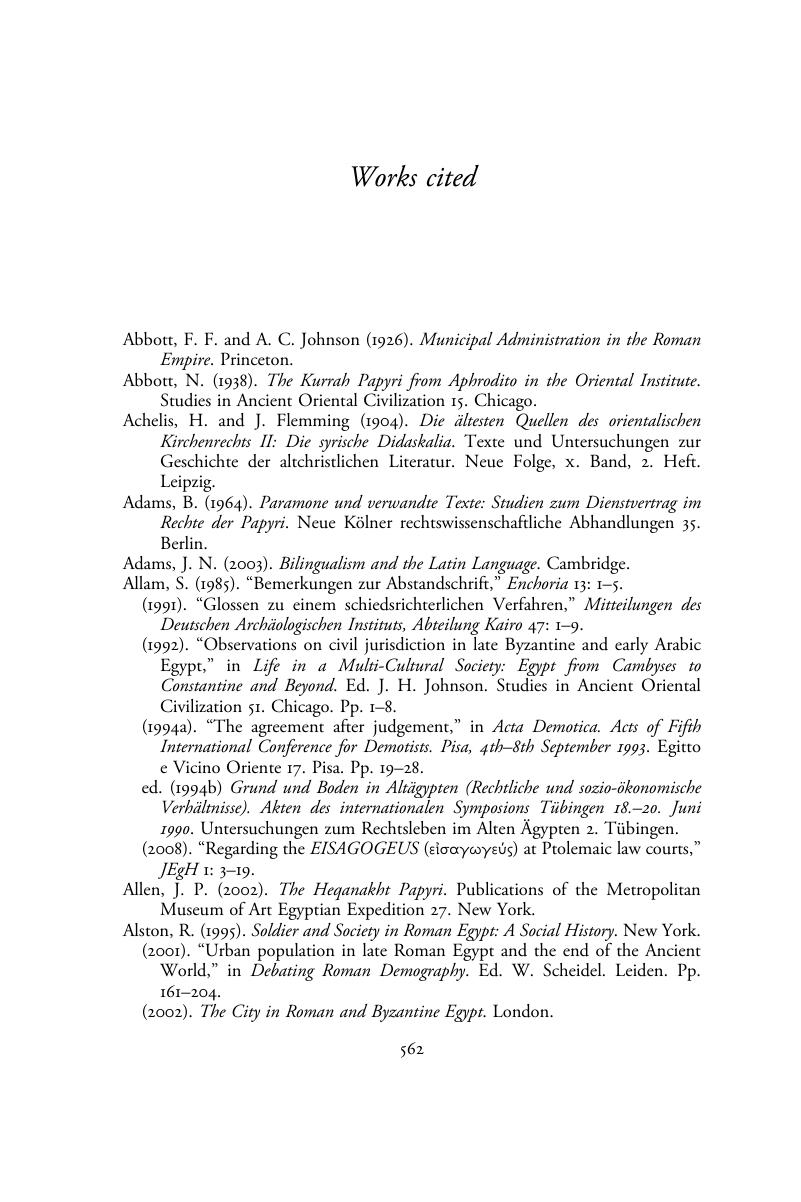 Law and Legal Practice in Egypt from Alexander to the Arab Conquest
Law and Legal Practice in Egypt from Alexander to the Arab Conquest Book contents
- Frontmatter
- Dedication
- Contents
- List of figures
- List of contributors
- Preface
- Calendars
- List of abbreviations
- Maps
- Chapter 1 Introduction and historical framework
- Chapter 2 The historical development of the form, content, and administration of legal documents
- Chapter 3 The languages of law
- Chapter 4 The family
- Chapter 5 Capital
- Chapter 6 Sale
- Chapter 7 Leases
- Chapter 8 Labor
- Chapter 9 Slavery in Greco-Roman Egypt
- Chapter 10 The judicial system in theory and practice
- Concordance
- Suggested reading for introductions to papyrology in English
- Glossary of technical terms
- Works cited
- References
Works cited
Published online by Cambridge University Press: 05 May 2014
- Frontmatter
- Dedication
- Contents
- List of figures
- List of contributors
- Preface
- Calendars
- List of abbreviations
- Maps
- Chapter 1 Introduction and historical framework
- Chapter 2 The historical development of the form, content, and administration of legal documents
- Chapter 3 The languages of law
- Chapter 4 The family
- Chapter 5 Capital
- Chapter 6 Sale
- Chapter 7 Leases
- Chapter 8 Labor
- Chapter 9 Slavery in Greco-Roman Egypt
- Chapter 10 The judicial system in theory and practice
- Concordance
- Suggested reading for introductions to papyrology in English
- Glossary of technical terms
- Works cited
- References
Summary

- Type
- Chapter
- Information
- Law and Legal Practice in Egypt from Alexander to the Arab ConquestA Selection of Papyrological Sources in Translation, with Introductions and Commentary, pp. 562 - 598Publisher: Cambridge University PressPrint publication year: 2014


